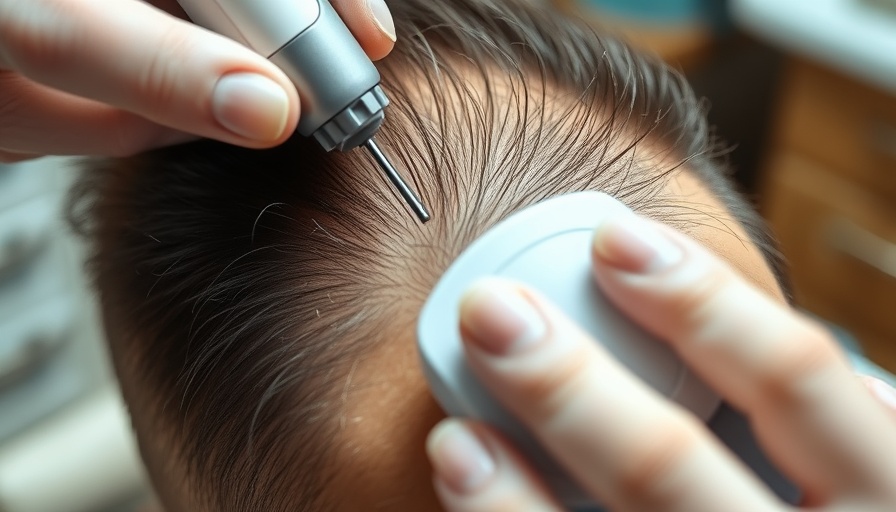
Unlock Your Hair Growth Potential at Home
Hair loss can be a daunting challenge for many, leading to a search for effective solutions. In this inspiring journey towards rejuvenating hair, we spotlight microneedling—a powerful technique gaining traction in the hair restoration community. With recent evidence pointing towards its effectiveness, microneedling not only promotes hair regrowth but also contributes to our overall scalp health. This innovative method could be your ticket to a fuller head of hair, all from the comfort of your home.
In 'Boost Hair Growth at Home with Microneedling #shorts', the discussion dives into effective techniques for hair restoration, exploring key insights that sparked deeper analysis on our end.
Understanding Microneedling
Microneedling, often referred to as dermarolling, entails using a specialized tool equipped with fine needles that gently prick the scalp. These small injuries essentially kickstart the healing process, encouraging blood flow and nutrient delivery to hair follicles—critical processes for anyone battling hair loss. Moreover, using a quality topical serum during this treatment can amplify results, ensuring that your efforts translate into vibrant, healthy hair.
Steps to Effective Microneedling
Taking the leap into microneedling starts with proper preparation. Ensure you have a clean and sterile toolkit, including your micro needling device set to the desired depth. Applying a recommended topical solution enhances the treatment, allowing for deeper absorption during the microneedling process. As you roll across the scalp, using gentle yet firm strokes in multiple directions, you contribute to both hair growth stimulation and improved scalp health.
Why This Matters for You
For those inclined towards natural, proactive solutions, home microneedling represents a feasible and cost-effective alternative to more invasive hair loss treatments, such as hair transplant surgery or costly therapies. It empowers individuals to take charge of their hair health, making this an accessible method for tackling alopecia solutions. Not only does it pave the way for potential hair regrowth, but it also positively affects mental health by fostering a sense of agency and self-care.
In conclusion, if you’re faced with the reality of thinning hair, consider exploring microneedling as a viable solution. By embracing this innovative approach, you take an important step towards enhancing your hair growth and overall scalp vitality.



Write A Comment